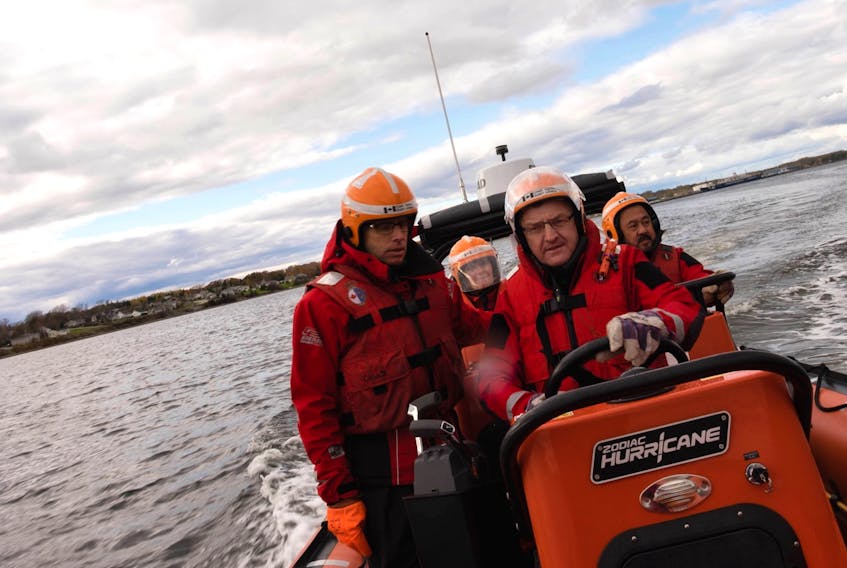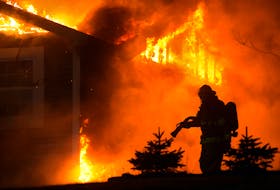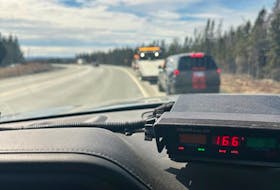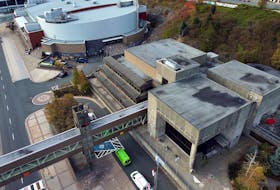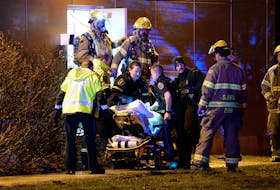The fact that the number of search and rescue incidents in Newfoundland and Labrador is twice as high as the national average, with most occurring at sea, is concerning enough to recommend a new approach, a Senate committee report released Thursday concluded.
On average, 600 lives are saved, while 18 others are lost, every year off the coast of Newfoundland and Labrador, which has the longest coastline in Canada — 28,000 kilometres.
Heavy ice, icebergs, freezing spray, storms and fog add danger to the situation.
The report, When Every Minute Counts: Maritime Search and Rescue, notes across the country search and rescue (SAR) missions save 15 lives daily, and the commercial fishing industry has the highest fatality rate among all employment sectors in Canada — an average of one death every month.
The committee recommended that Fisheries and Oceans Canada ensure its regulations and practices give priority to fish harvesters’ safety.
The Senate committee also wants Transport Canada to amend its regulations to extend the mandatory use of emergency position-indicating radio beacons (or EPIRBs) to vessels in all fishing fleets. A timeline of two years should be given to the fishing industry to achieve mandatory EPIRB carriage, the report stated.
The Senate Committee on Fisheries and Oceans study of maritime search and rescue operations led its members to fact-finding missions on the West Coast, East Coast and in the North, work that began in 2016 and included public hearings in St. John’s, Ottawa and Halifax.
Newfoundland and Labrador Senator Fabian Manning, the committee chairman, was unavailable for comment Thursday, but planned to address local media Friday.
In its report, the committee recommends that, as a pilot project, the Department of National Defence authorize a civilian helicopter operator to provide aeronautical search and rescue coverage in Newfoundland and Labrador and the Canadian Arctic.
“Committee members were also told that there is a shift in the way the fisheries are conducted in (Newfoundland and Labrador), with a higher number of vessels being on the water more frequently, longer fishing seasons, and fishing activities further from the shore,” the report states.
"There is also an increase in offshore oil and gas development, more recreational boating and growing large-passenger vessel activity. Given the lack of a (Canadian Air Force)
CAF fixed-wing SAR aircraft in the province, having a private aeronautical SAR asset staged at proximity of these marine activities could reduce SAR response times and improve outcomes.”
The senators ruled out privatization of aeronautical SAR — like in the United Kingdom, Ireland and Australia — or another large government capital expenditure project for additional SAR aircraft, or to rebuild the older ones as the right solution to address Canada’s unique situation.
“However, the committee believes that alternative service delivery — in the form of public-private partnerships that leverage the best of both public and private capabilities/resources — could offer, in the short- and medium-terms, an innovative and cost-effective solution to supplement SAR resources in regions with little or insufficient coverage,” the report said.
Also, the committee recommends that the Canadian Coast Guard be established as a separate statutory agency reporting to the minister of transport, with Transport Canada transferring the responsibility of search and rescue prevention and recreational boating safety back to the Canadian Coast Guard along with the associated funding.
It noted the confusion that can occur with various departments and levels of government involved in search and rescue jurisdiction, as well as support from volunteers and the private sector.
“During the study, the committee learned that, despite the divided responsibilities, the lines between ground, maritime and aeronautical SAR are often blurred,” the report notes.
“For example, the federal government can assist in ground SAR efforts, medical evacuations and other humanitarian incidents, if asked to do so by the responsible provincial/territorial or municipal authority. Similarly, response to maritime incidents may require aeronautical SAR assets, and vice versa. Moreover, when an incident occurs on sea ice, there may be confusion as to whether the incident requires a land SAR or maritime SAR response. The committee heard that confusion has, in the past, contributed to delays in rescue. As a result, it is important to acknowledge that the risk for serious injury and death increases as SAR response time increases.”
Newfoundland and Labrador’s Maritime Rescue SubCentre was closed for a time, but reopened in St. John’s. It is part of the wider Halifax search and rescue region that includes all four provinces, and the report said there are portions of the Halifax region with inadequate SAR coverage — specifically the waters off Newfoundland and Labrador.
Response times and reliability came up as a major concern.
In the Halifax search and rescue region 1,741 Maritime search and rescue missions were led in 2017.
A distress incident at sea can occur suddenly and without warning, as a result of injury, mechanical failure, environmental conditions, lack of safety equipment or human error, the Senate committee noted.
Since the committee launched its study, besides the reopening of the St. John’s subcentre, Newfoundland and Labrador saw the construction of two new SAR lifeboat stations in Twillingate and Bay de Verde, and the refurbishment of the lifeboat station in St. Anthony. The 9 Wing Gander, which operates three Comorant helicopters, is often the first responder to maritime SAR incidents in Newfoundland and Labrador. The Comorants require lengthy maintenance, which reduce their availability, the committee noted.
A number of witnesses from Newfoundland and Labrador recommended that one of the country’s new fixed-wing aircraft be staged in Gander to help improve the SAR response to the high number of maritime incidents in the province.
Recruiting and retaining personnel has come up as an issue across the country — its expected 25 per cent of marine personnel across the country who operate Coast Guard vessels will retire over the next five years, and the committee said the looming human resources shortage must be addressed immediately.
“A government report even suggested that the CCG currently lacks adequate staff to respond ‘in any part’ of its areas of responsibility ‘at any time,’ including maritime SAR,” the report states.
Low morale, stress and burnout were complaints as the senators toured the country. To augment the Coast Guard college in Sydney, N.S., the committee has recommended a expansion of training programs in Western Canada.
As for volunteers who often aid search and rescue missions with their own vessels, the need for better equipment and funding was stressed.
Canadian Coast Guard Auxiliary–NL members told the committee that they do not have sufficient funding to supply their vessels with SAR equipment, and listed equipment they should have on board — de-watering diesel pump, re-boarding device (Jacob’s ladder), self-focusing waterproof binoculars, SAR transponder, automated external defibrillator, first aid kit, tow rope and buoyant rescue bag.
The Senate committee issued a number of recommendations aimed at helping the fishing industry improve safety at sea.
“The recurring finding of an average of 12 deaths per year in the commercial fishing industry is of great concern to the committee,” the report said. “The persistence of this number indicates that something must change. Along with witnesses, members of the committee believe that real and lasting improvements in fishing safety can be realized through changes to fishing vessel regulations, commercial fisheries management and prevention.”
Some other recommendations in the report
• Canadian Armed Forces seize the opportunity afforded by the Defence Investment Plan 2018 to increase and diversify its search and rescue workforce to respond to the increased demand for search and rescue.
• The Canadian Coast Guard increase the Canadian Coast Guard Auxiliary’s funding in order to, at a minimum, offset higher operational expenses, and to ensure auxiliary members maintain training in accordance with the national competency standards.
• The Canadian Coast Guard establish a Maritime Search and Rescue Fund to support the purchase of equipment and services needed by regional Canadian Coast Guard Auxiliary organizations.
• Transport Canada develop and disseminate user-friendly information regarding vessel stability to reduce unsafe practices in the commercial fishing industry.
• Fisheries and Oceans Canada ensure its regulations and practices give priority to fish harvesters’ safety.
• The Canadian Marine Advisory Council, Transport Canada, Fisheries and Oceans Canada, and the Canadian Coast Guard work with fishery safety organizations and fish harvesters to develop a national action plan on safety in the commercial fishing industry. This action plan should be provided to the committee within three years of the tabling of this report in the Senate.
• Capital planning be extended to 20 years to reflect the need for the SAR fleet’s renewal, upgrade and modernization.
• Recruitment strategy have a particular focus on attracting and retaining Indigenous cadets and employees within the Canadian Coast Guard organization.
Twitter: @bsweettweets

